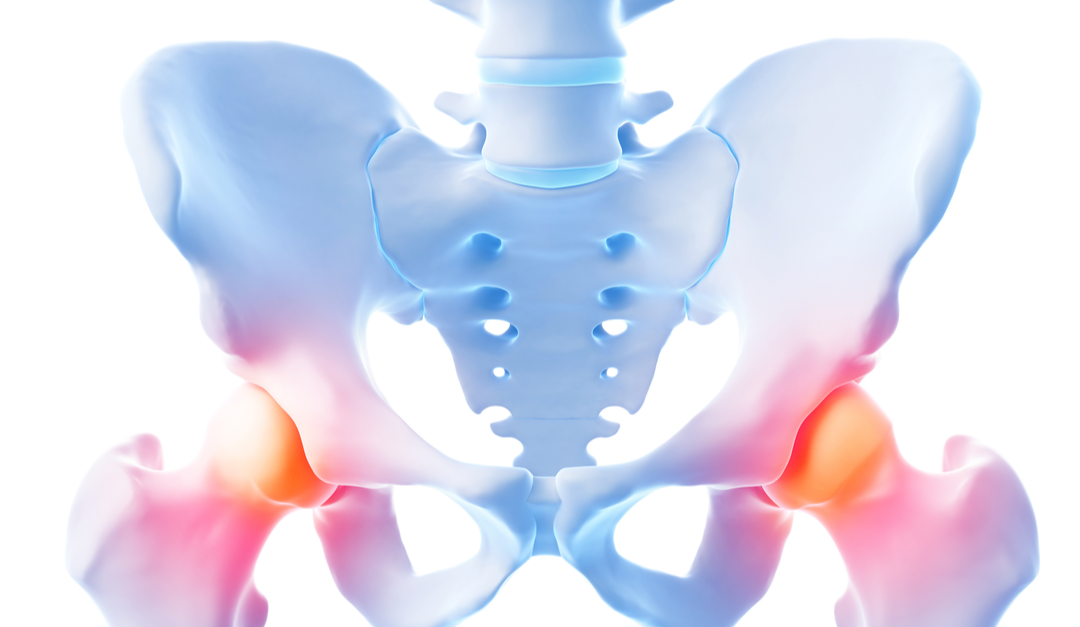The hip is a large ball and socket joint composed of the head of the femur (thigh bone) and acetabulum of the pelvis. Muscles, ligaments, tendons and soft tissues work together to stabilize and move the hip. When a patient injures their hip, their ability to perform weight-bearing activities decreases and pain can also present.
Older patients and active individuals/athletes make up the patient populations that most frequently injure their hip. Three of the more common hip injuries include:
Hip Bursitis
Bursae are small fluid-filled sacs found adjacent to most of the joints of the body, including the hip joint and act as cushions or pillows between the bones and soft tissues (muscles and tendons). They allow the hip move without the bone rubbing on the adjacent soft tissues. When one or more of the bursae become irritated or inflamed, there is often and element of swelling, and pain, and bursitis is said to be present. The most common causes of hip bursitis include the following:
- Overuse
- Trauma
Symptoms of pain and tenderness present with hip bursitis. Symptoms typically become worse with movement. In most cases, hip bursitis and the symptoms it causes are effectively treated using a combination of rest, activity modification, anti-inflammatory medications and physical therapy, and occasionally a corticosteroid injection.
Labral Tear in the Hip
The labrum is a circular piece of cartilage that attaches to the periphery (rim) of the acetabulum. The labrum is one of the stabilizers of the hip joint by helping to hold the head of the femur centered in the acetabulum. A labral tear occurs when the labrum is partially torn away from its attachment. Hip pain and instability are commonly associated with a labral tear. The most common causes of the injury include the following:
- Trauma
- Overuse
- Anatomical abnormalities
Labral tears are often be treated using nonsurgical methods with surgical treatment options available for those who fail to improve with non operative management. The goal of treatment is to decrease pain and stabilize the hip. An orthopedic specialist makes his treatment recommendations based on the severity and location of the tear as well as the physical condition and age of the patient.
Hip Fracture
A hip fracture is a serious injury that requires immediate medical attention. Patients who fracture their hip typically experience hip and groin pain and have a difficult time moving their hip or putting weight on the affected leg. Hip fractures may be caused by the following:
- Impact traumas (car wrecks, a fall from heights, a sudden blow, a collision)
- Osteoporosis
- Forceful sports movements
The severity of the fracture determines the treatment option that will be used. Nonsurgical and surgical treatment options are available. The goal of treatment is to allow the fracture time to heal. Symptoms of pain lessen as bone healing occurs which may take from 6- 8 weeks.
Seeking Treatment for Hip Injuries
Dr. Nicholas Alexander is the Founder of Mahwah Valley Orthopedic Associates and a Board Certified Orthopedic Surgeon specializing in both the surgical and non-surgical treatment of hip and knee conditions. Dr. Alexander completed his Fellowship in Adult Reconstruction and Reconstructive Surgery of the Hip and Knee at the Johns Hopkins School of Medicine and has over two decades of experience. He also serves as the Chairman of the Valley Hospital Total Joint Center.
Dr. Alexander has offices in Mahwah and Clifton, NJ. If you have experienced a hip injury and would like to receive a treatment solution, please contact our office to make an appointment. We are currently accepting new patients and will get you in right away!

